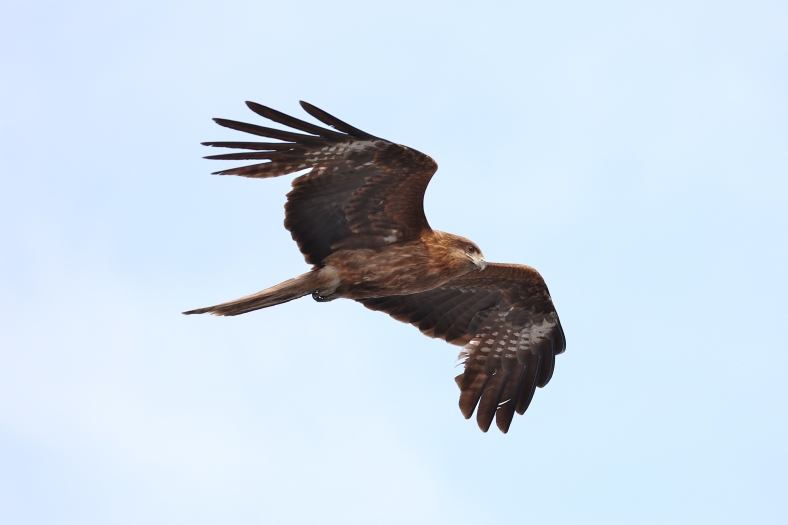What was this bird thinking, leaving its familiar year-round home east of the Andes in South America, and flying all the way across the Gulf of Mexico to Southwest Florida? Was its internal compass whacky, or perhaps it just was tired of the same-old, same-old of Brazil? Just outside Naples, Florida it has become a celebrity bird, attracting hard-core birders from far and wide hoping for a look and lucky photo.
The Large-billed Tern, Phaetusa simplex, is the only member of its genus and clearly an odd-looking tern. A yellow, Jimmy Durante bill and the distinct black primaries and white secondaries, along with the gray back are quite distinctive.
This rarity in Florida was not an easy “get” for Andy and me, despite it being reported in eBird at the same general location nearly everyday since June. Andy, in Massachusetts and I in Maryland were locked into our summer routines, and not quite fervent-enough chasers and listers to hop on a plane and enter the Florida heat and humidity for one life bird. Perhaps two would have been enough, though.
But as soon as we arrived this fall it was on to Eagle Lake Community Park and Lely Resort just south of Naples on the Tamiami Trail. This is not a Florida wilderness with its water park, tennis courts, soccer and baseball fields, and gaudy giant horses guarding the entrance to the resort, but apparently the birds love it. The runoff drainage lakes and surrounding mixed habitat of slash pines and shrubs attracts a great collection of song and water birds, and some hunting raptors. The tern had stumbled onto the location, liked what it saw, and settled in for the long haul, cavorting with the Royal Terns and an occasional Black Skimmer.
Our first visit to the site was a dud. I saw a tern that seemed a little darker than the other Royals and maybe had a yellowish bill, but Andy was a skeptic. It was wishful thinking of a rarity chaser on my part. A passing birder who had seen the bird earlier weighed in with Andy and we went home empty handed. I did see a Painted Bunting and a juvenile Bald Eagle along with the usual water birds. There is never a bad day birding. Alas, eBird reported the target tern at our location just 30 minutes after we left.
The Large-billed Tern generally likes freshwater lakes and their sandy beaches, so our bird had read the books. In non-breeding season they do flock up and head to the ocean beaches and mangroves of Brazil. This species was first described in the western literature by Englishman John Latham in 1785 while his country was busy losing its North American colonies to the American Revolution.
Our second attempt the next day was the charm. Andy thought a visit at exactly the time it was seen on the prior day might bear fruit. This time I was the skeptic; birds can’t tell time. The first lake just yielded the fishing Royals again, but we did meet a birder who had seen it down by the horses earlier in the day. You can always tell a “real” birder by their brand of binoculars and camera, the size of their lens, and their dress. Birders are not slaves to fashion…she looked like the real thing.
I came up with a divide and conquer strategy which bore fruit. I would stay in the shade by the first lake while Andy hiked down to the horses to check out the other two lakes. We would stay in touch by cell phone. It wasn’t long before I saw a tern with dark wings flying toward Andy over the horses and palms. He answered his phone just as he spotted the bird landing on a sandy beach next to several Blue-winged Teals. Our pictures were from 100 yards and not perfect. We never did get the coveted flight shot, but you cannot expect everything.
I realize that this is my first blog posting in over a year. Life and other pursuits have intervened, but I still have that birding bug. In the last year I’ve written a birding book, Winging It, The Musings of a Birder, and have become engrossed with a new hobby of astrophotography. I’m still looking up through a glass and taking pictures, but its after dark and the targets are out of this world. I’m not sure what the future of this blog is, but am happy that readers are still visiting it and enjoying the old posts.



















































































































